Our Latest News- July 3, 2024
Skala Field Station
As the month of June comes to an end, we said goodbye to our second group of the season and welcomed the third. After 2 weeks of data collection and exploring the island the second group left with smiles on their faces. They had the luck to observe a critically endangered ray and turtles during their snorkel surveys and witness a red moon in the Greek sky during one of the many evenings they spent playing card games. As well as card games many of their evenings were filled watching the euros, which they enjoyed down in Skala.
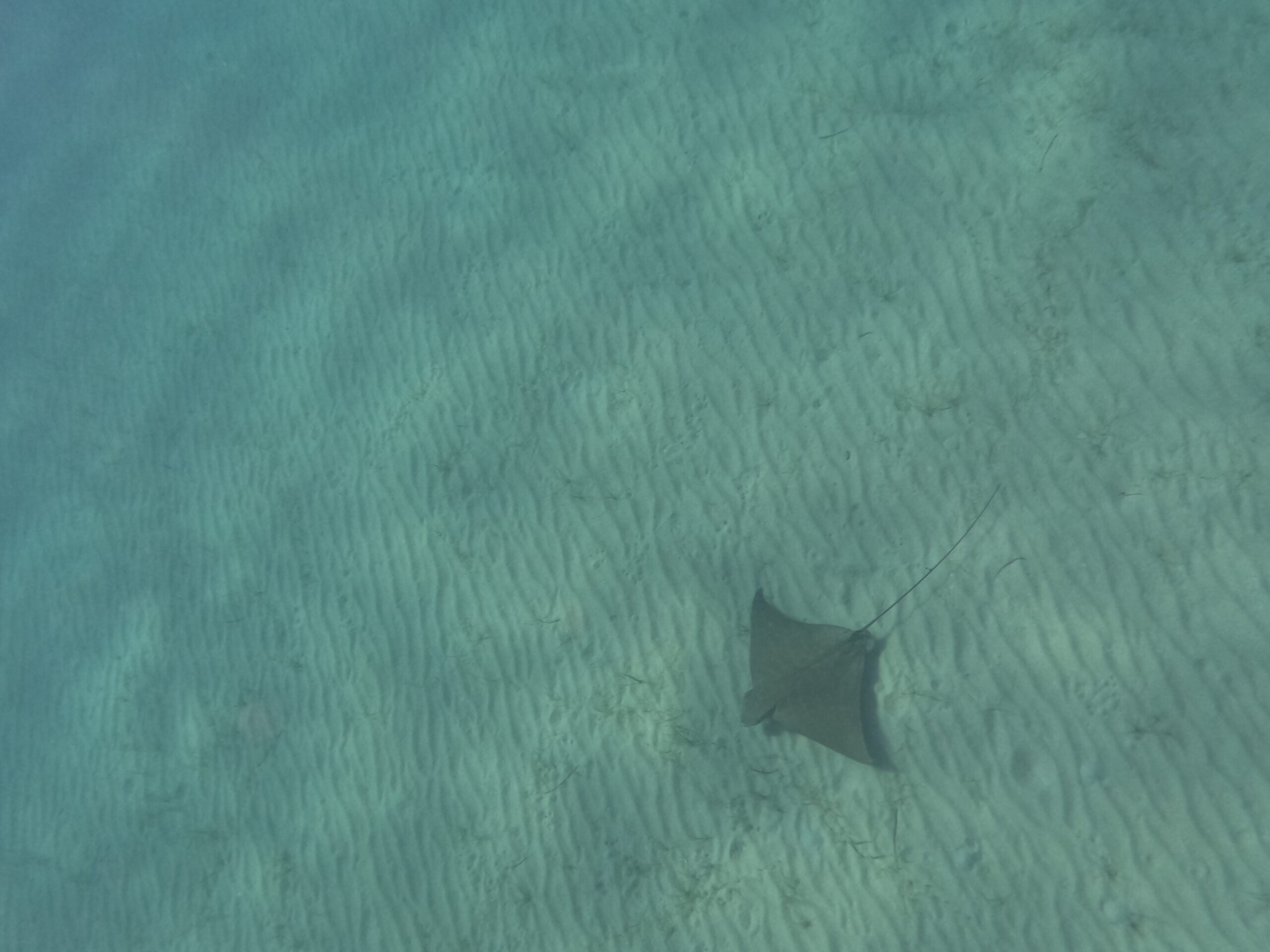
The second group started their first week with windy conditions during their surveys, but even with this they still managed to collect lots of data, especially during their first-ever sand dune survey where they managed to complete 18 quadrats! With this data, we were able to finally confirm the presence of Silene Nicaeensis, as the high quality of photos enabled a positive ID, this plant has been appearing previously but was unable to be classified. Now we have confirmed another species present in the dune system.
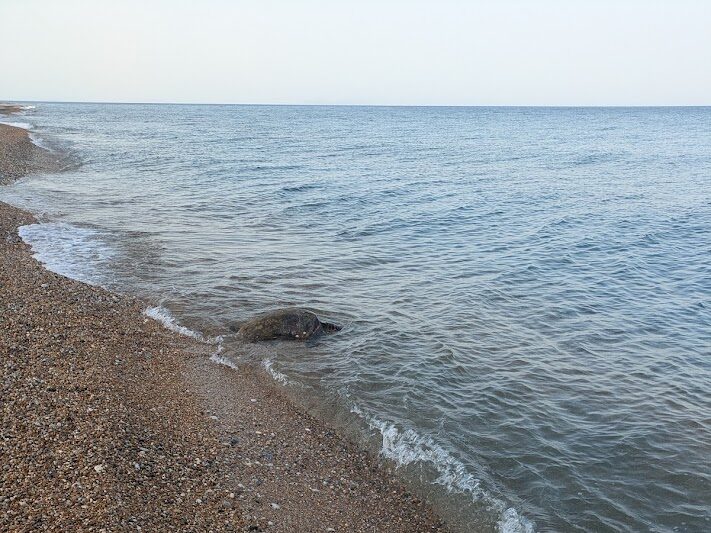
During their first morning here some of the volunteers got the chance to witness a turtle nesting on one of the beaches, which kickstarted a great two weeks to come. Many of them have also been lucky to swim with different species during their free time. As well as take advantage of the pool facilities down on Mounda Beach. We look forward to seeing all the valuable data this group collects and all the amazing memories they make!!!
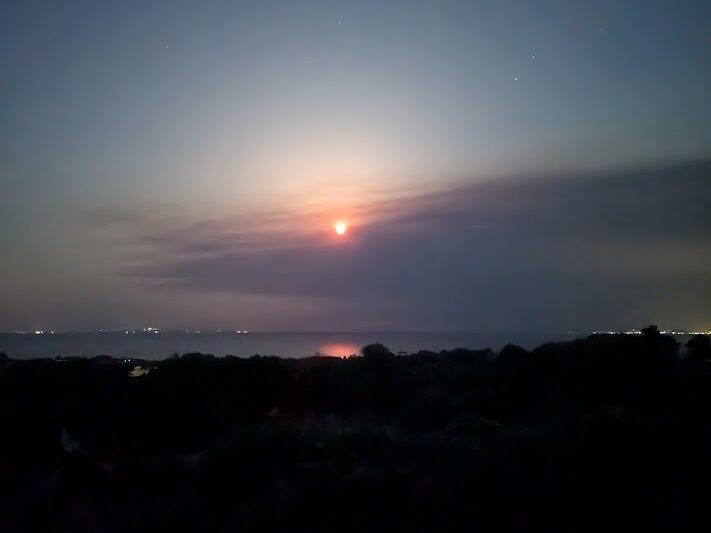
Lixouri Field Station
It has been another busy 2 weeks in Lixouri, with volunteers working very hard to locate and protect 42 more nests. This brings the current total nest count to 96, which is the same number of nests that were found in Lixouri during the whole season last year!
Across all three areas surveyed in Lixouri, 19 nests have been relocated, 6 of which were trans-beach relocations. The average clutch size of nests found on the island is 95, however, during one relocation, there was a clutch of just 9 eggs, oval in shape. Another unusual discovery was finding 9 eggs all connected in a chain, within a clutch of 90 eggs.
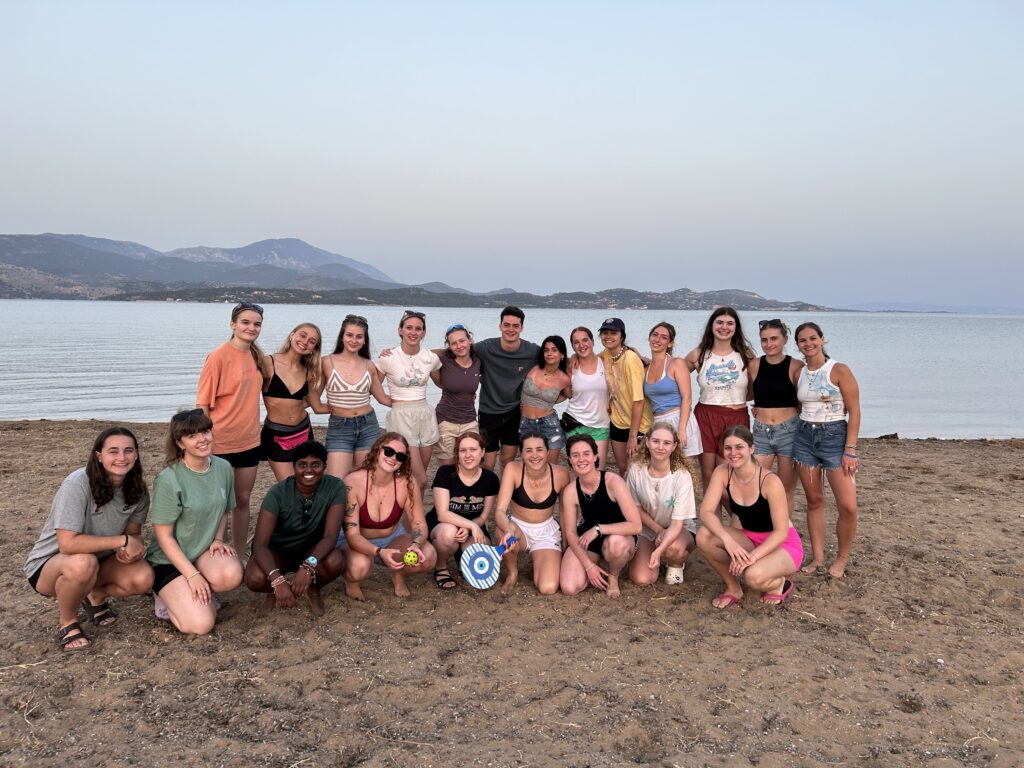
Nesting females have been seen during night surveys, every night over the past few weeks. A total of 20 different individuals were seen, including 13 that were newly tagged. Four turtles have now been observed laying their second clutch on Megas Lakkos whilst Gilleni, a turtle that was first tagged at the beginning of the season, laid her third clutch.
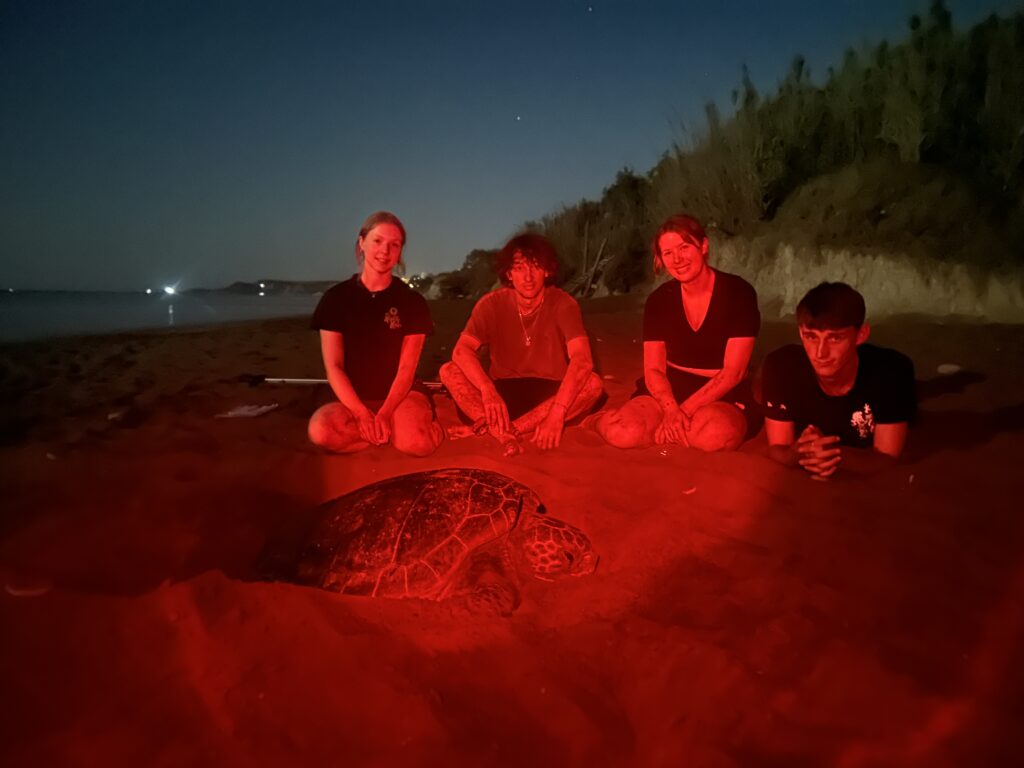
Unfortunately, a number of these turtles observed during night surveys have had boat strike injuries. These strikes have been different sizes and at different stages of healing, highlighting how common this issue is, but how resilient turtles can be.
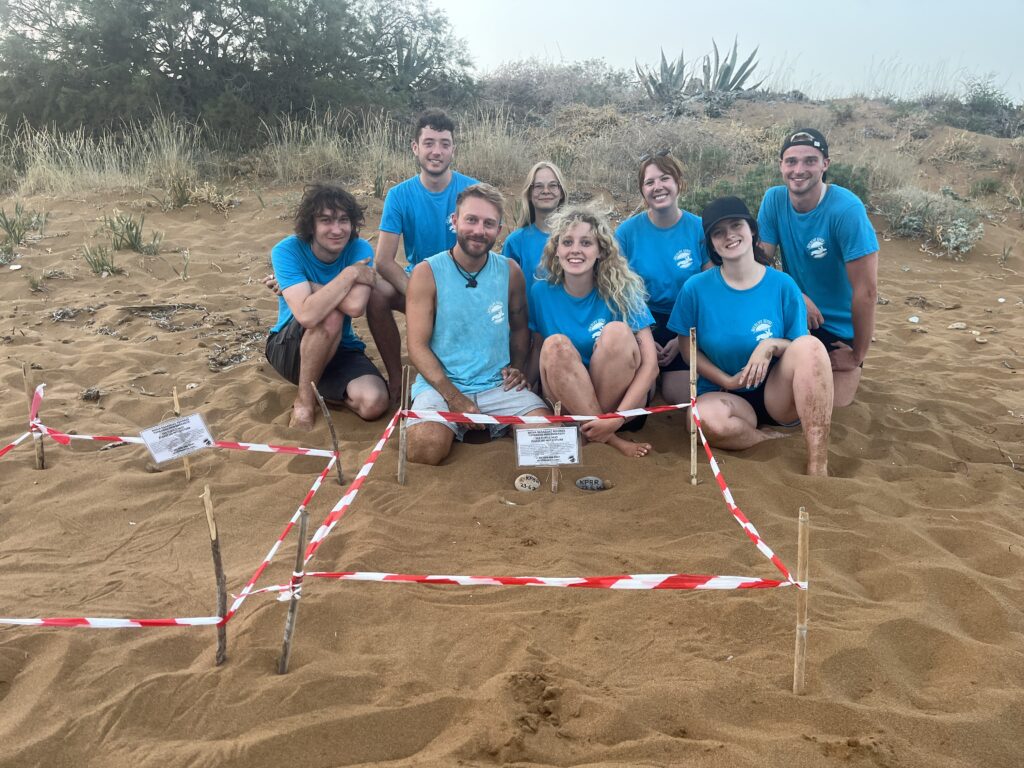
During the harbour shift, volunteers spotted Crackles, a male turtle who also had multiple boat strikes to his carapace. These injuries were first spotted in 2022 in Argostoli harbour and he is now commonly seen in Lixouri harbour. Not all turtles are fortunate enough to survive these types of injuries and last week the team received a call about a dead turtle in the harbour. This turtle was likely to have been a nesting female, based on size, however, the cause of death could not be determined at the time.
Education Program Field Station
It’s been another successful few weeks on our education project, with various species spotted during our snorkel surveys and harbour shifts. Highlights include starfish, pink jellyfish, sea slugs, monk seals, and even octopi!
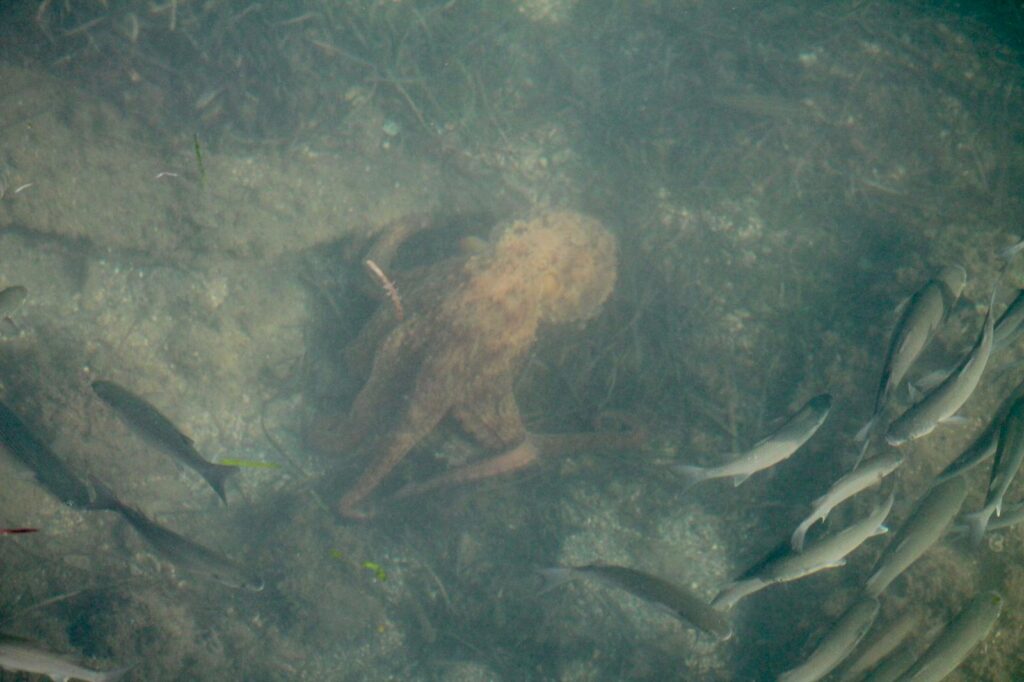
We’ve completed two beach cleans, covering over 330 meters of beach. Enthusiastic students and staff also helped fish out some easily reachable plastic bags that were floating in the harbour and could have potentially been ingested by our local turtles. We educated many tourists about the negative effects of feeding fish to the turtles, from the direct negative effects on their health to how it increases the chance of propeller strikes as they start to associate boats with food.
On our morning surveys, the groups were proactive with helping to collate the measurements for the many emergences as well as invaluable when digging and searching for egg chambers, with some volunteers even finding the drop for the chamber! Relocations were observed by both our student groups, tourists and of course the goose, which we have lovingly named “Duck”. Duck unfortunately is still living on Kanali Beach awaiting relocation by the local wildlife authorities.
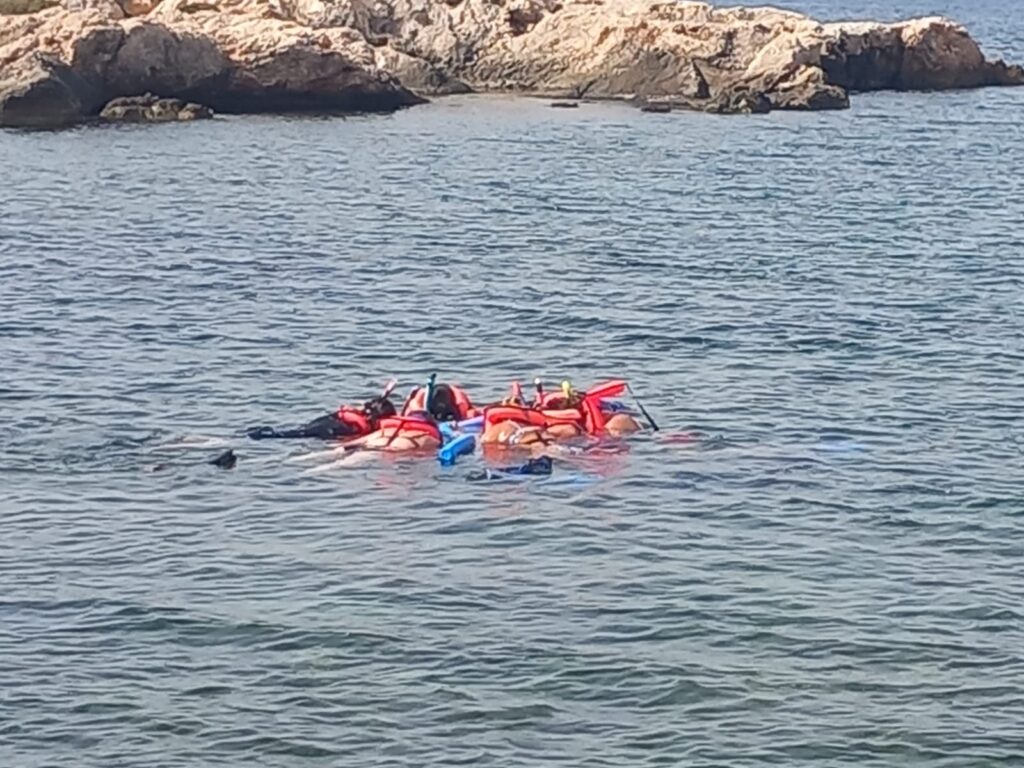
Amazingly, one of our morning survey groups was fortunate enough to observe a nesting female return to sea. They were incredibly respectful and were so thankful for what they described as “a once-in-a-lifetime experience” which was then followed by them locating the nest she had just laid!
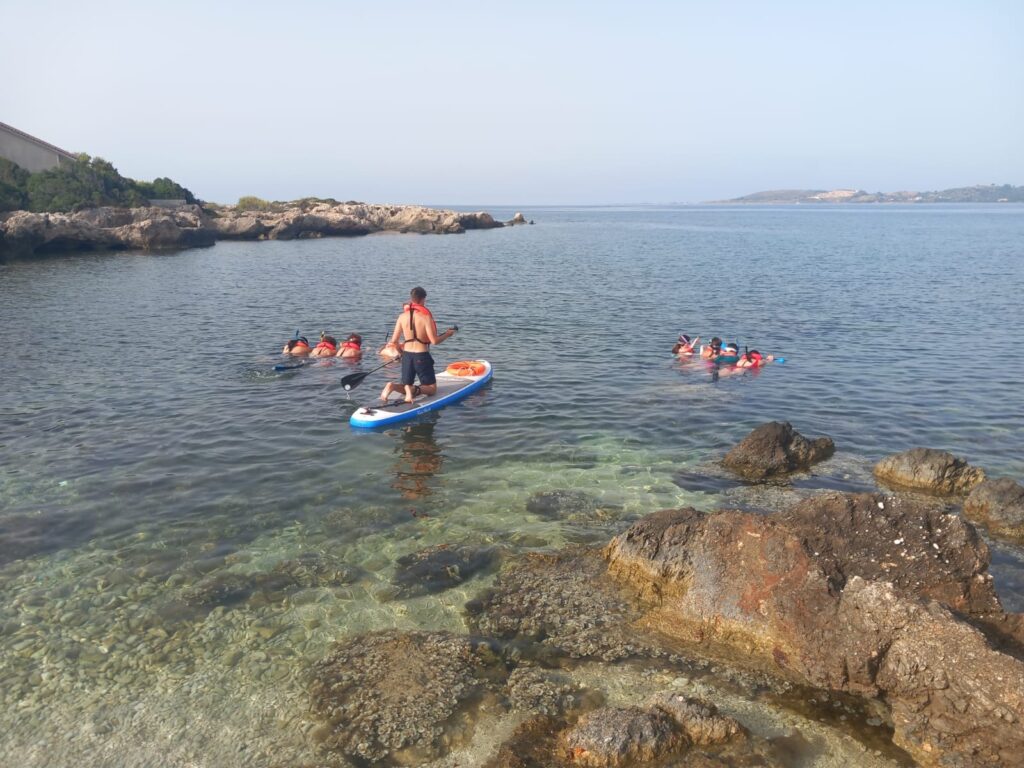
Lourdas Field Station
We’ve had an exceptionally busy two weeks on our Lourdas beaches, culminating in a record 31 emergences on Monday, with 6 nests discovered. This brings our total to an impressive 33 nests, surpassing last year’s numbers for this time of the season! The Lourdas area has seen 212 non-nesting emergences, bringing our total to 245 emergences.
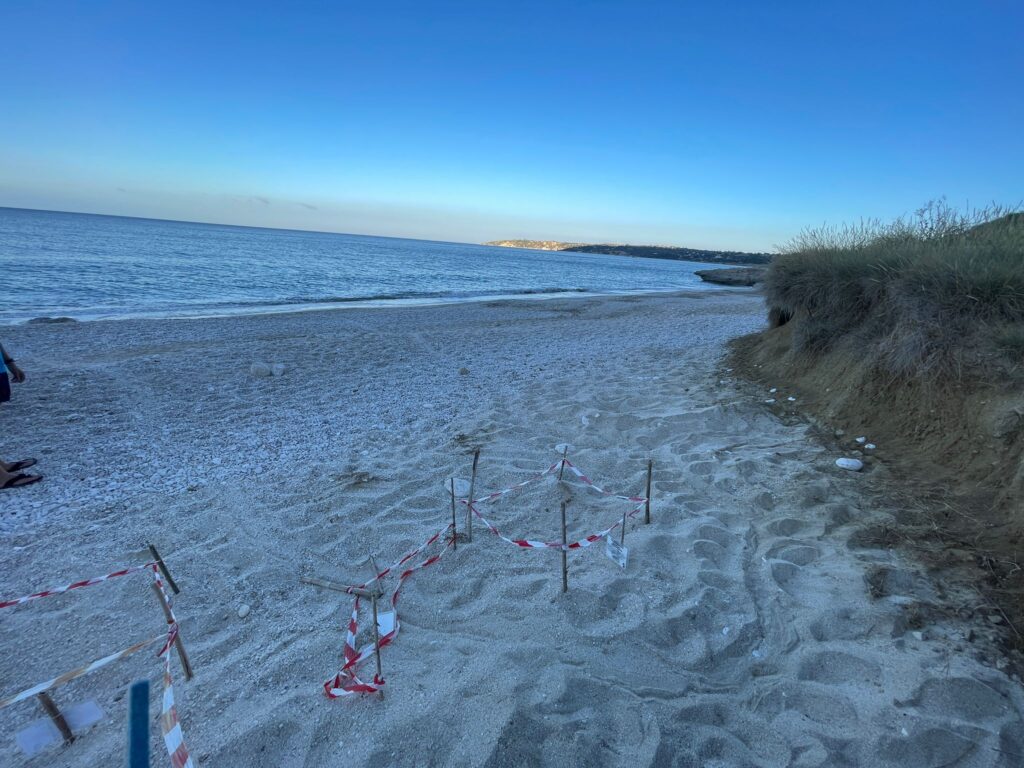
Several shallow nests were found as the turtles struggled to dig deep enough chambers due to our very stony beaches. Additionally, other nests were relocated for various reasons, resulting in 12 relocations overall.
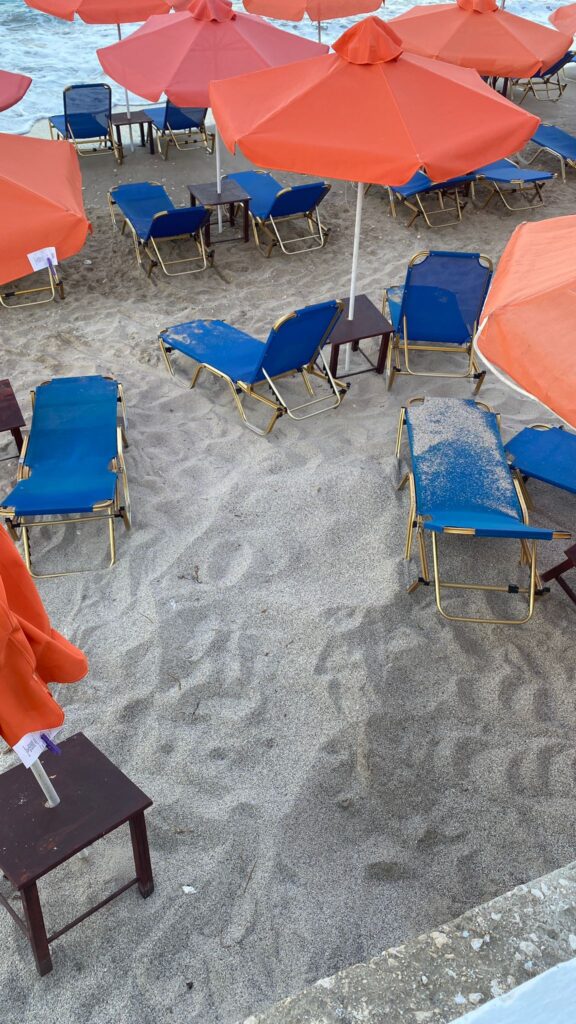
After an extremely busy morning, with our team on the beaches until around 2pm, we returned later that evening to relocate nests that couldn’t be moved earlier due to the heat. Following the tiring yet rewarding work of relocating and digging relocation holes, our team were ready to say goodnight to Lourdas when an unusual shape was spotted from the sea wall. We gathered together, crouched, and quietly walked over to the figure, realising with delight we were witnessing a possible nesting attempt by a female loggerhead turtle!
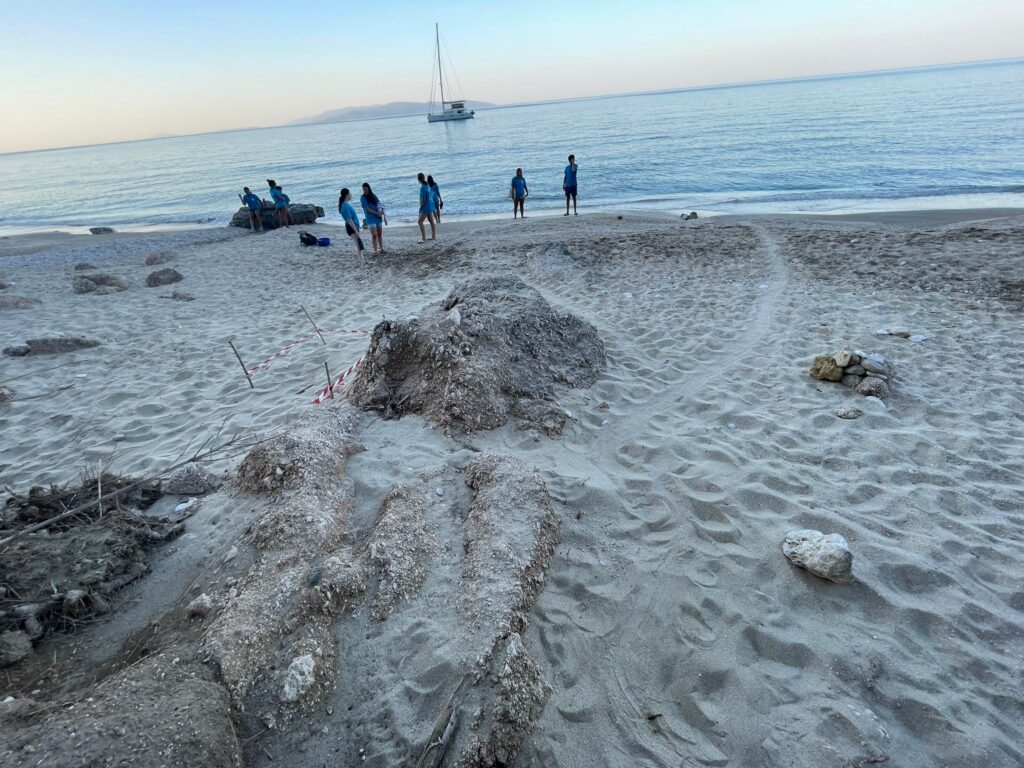
Witnessing this emergence, which on this occasion did not result in a nest, highlighted the impact of human interference on our beaches, as the turtle got stuck under a sunbed. She eventually pushed through, but ultimately it required more effort than should have been necessary if it wasn’t for the anthropogenic factors.
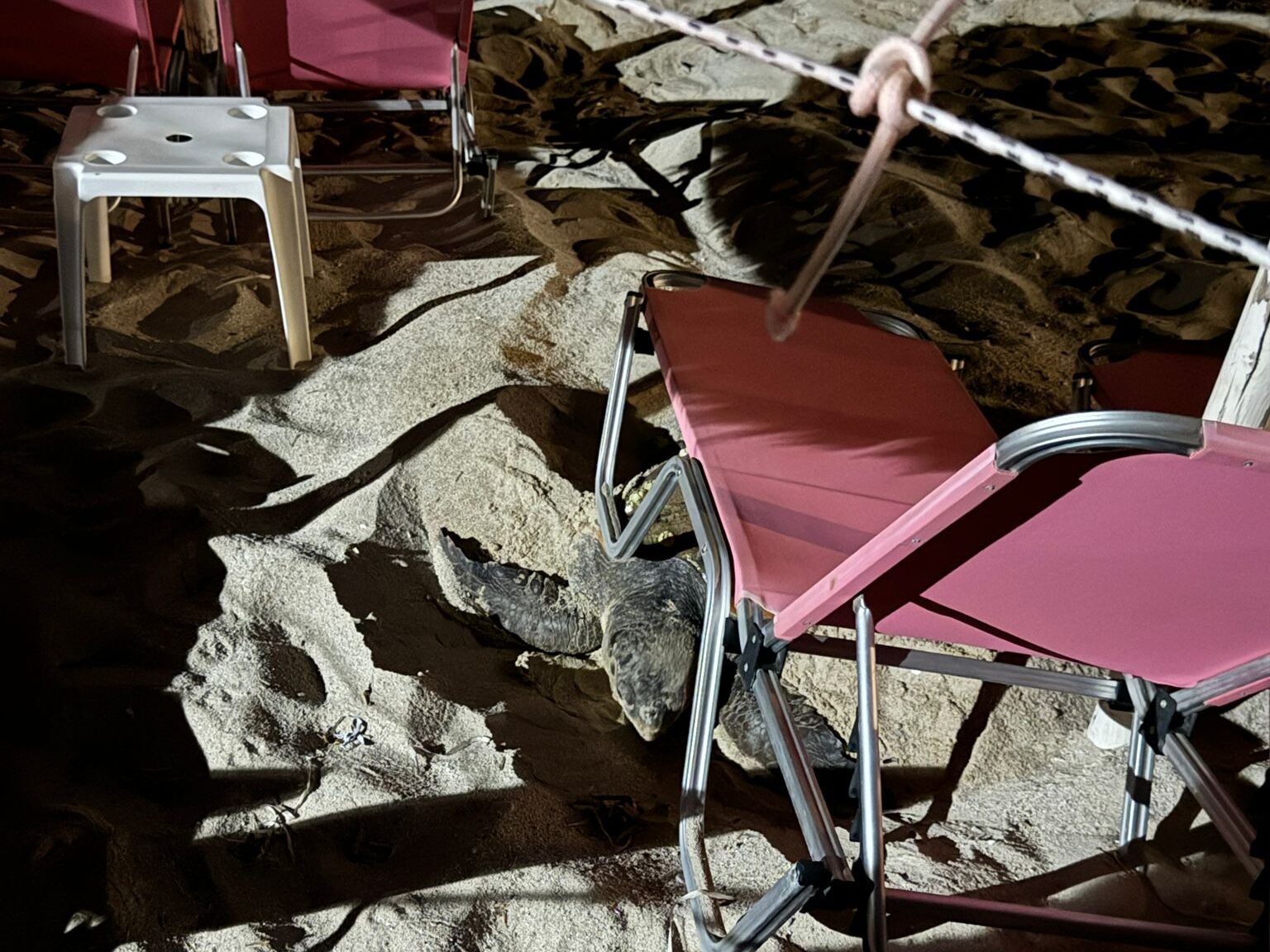
Further down the beach, a second female turtle was emerging, this one however did not make any nesting attempt and slowly made her way back to sea. We were incredibly fortunate to witness two emergences that evening.
Lourdas Beach, due to its small width and proximity to beach bars, restaurants and hotels, is badly affected by both noise and light pollution which can often spook or deter a female from nesting on this beach however, these determined turtles continue to choose Lourdas Beach for nesting.
Argostoli Field Station
Our new volunteers have been enjoying their first week in Argostoli, they have been completing morning surveys to record 125 emergences and have helped with 16 nest relocations! We have a total of 68 nests as of today! Nest relocations have also been taking place to ensure that the clutches are not too close to sea and at risk of inundation. We have additionally been placing temperature loggers in selected nests to collect data on the temperature at which the nests will be incubating. This is extremely important as sea turtles’ sex is determined by the temperature at which the nest incubates, this data will help us to estimate the male-to-female sex ratio within our nests. Following the volunteers’ training day and hands-on beach training, they were able to watch a relocation of a nest on Eglina Beach!
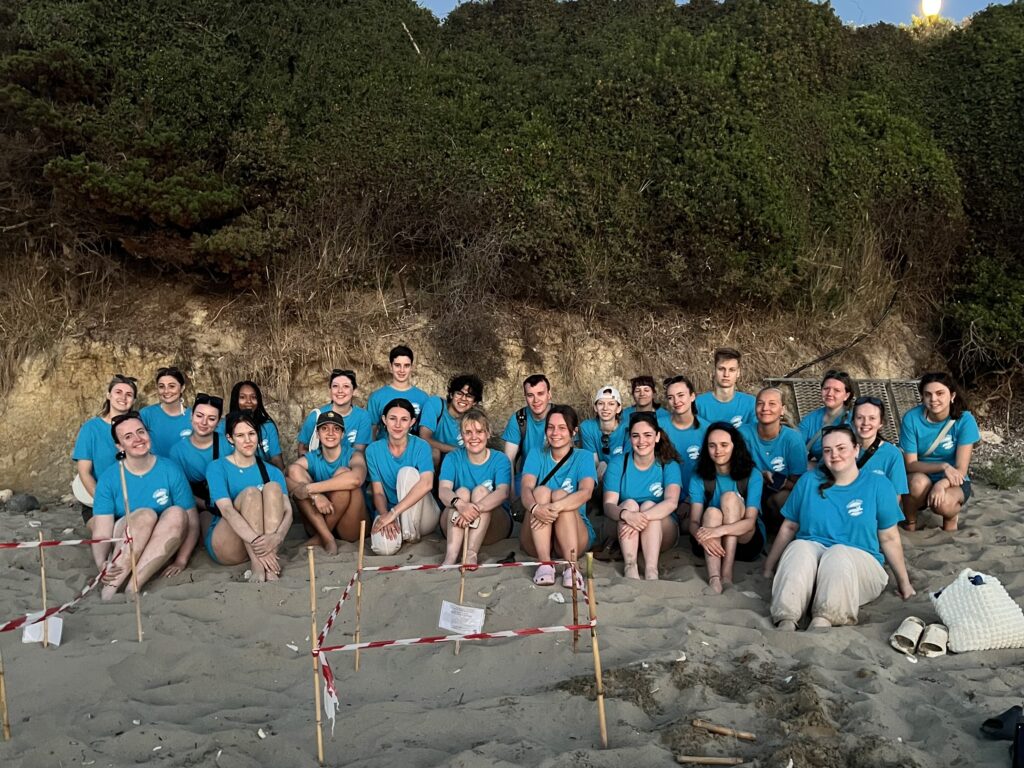
This week some of the team were able to tag two new female sea turtles on a nearby nesting beach following a call from a tourist. They were able to take measurements, headshots and place tags as the turtles were on their way back to sea following nesting attempts!
Eglina and Ai Chelis beaches have been much busier nesting beaches compared to last year, with increased nests and emergences! We are soon approaching the 45th incubation day on some of our first nests laid, so it won’t be long before hatching season commences.
In addition to morning surveys volunteers have been avidly participating in harbour shifts in Argostoli, they have collected data on foraging events and interactions and have also spotted tagged turtles such as Artemis. They were also surprised to spot an octopus off the De Bosset bridge!
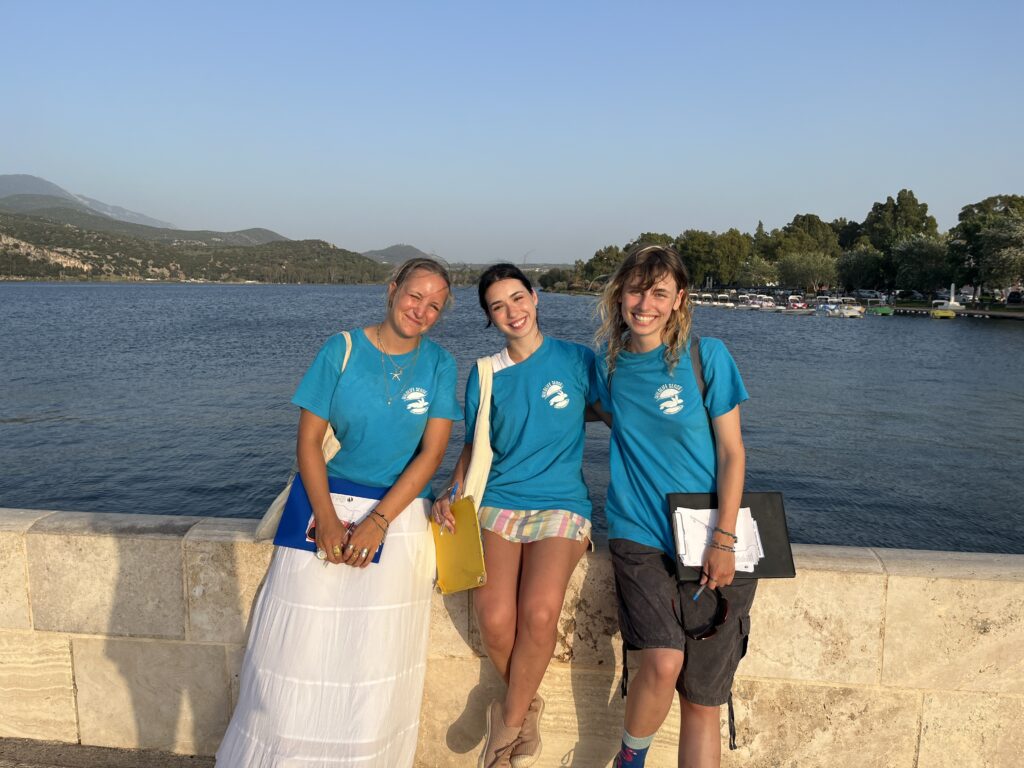
Our volunteers have been settling in well and have been enjoying a range of activities from pizza night and quizzes, to watching the Euro games together! They have also been spending their days off exploring the island, taking boat trips and visiting areas like the Melissani caves.
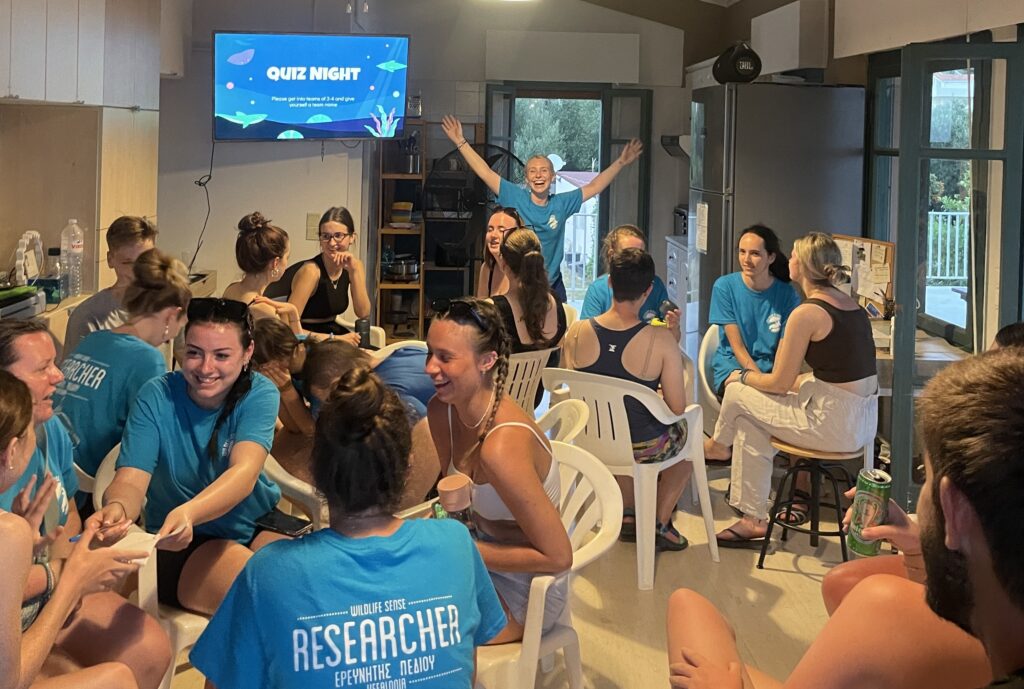
Svoronta Field Station
The season has welcomed the start of the new Svoronata Coastal Conservation Field Station. We have some new shifts, like that of Bird Surveys, that we have been conducting in the Lagoon in Argostoli. Our volunteers have spotted some exciting species, such as the Eurasian Eagle Owl and the Arctic Skua. However, none can top the Muscovy Duck.
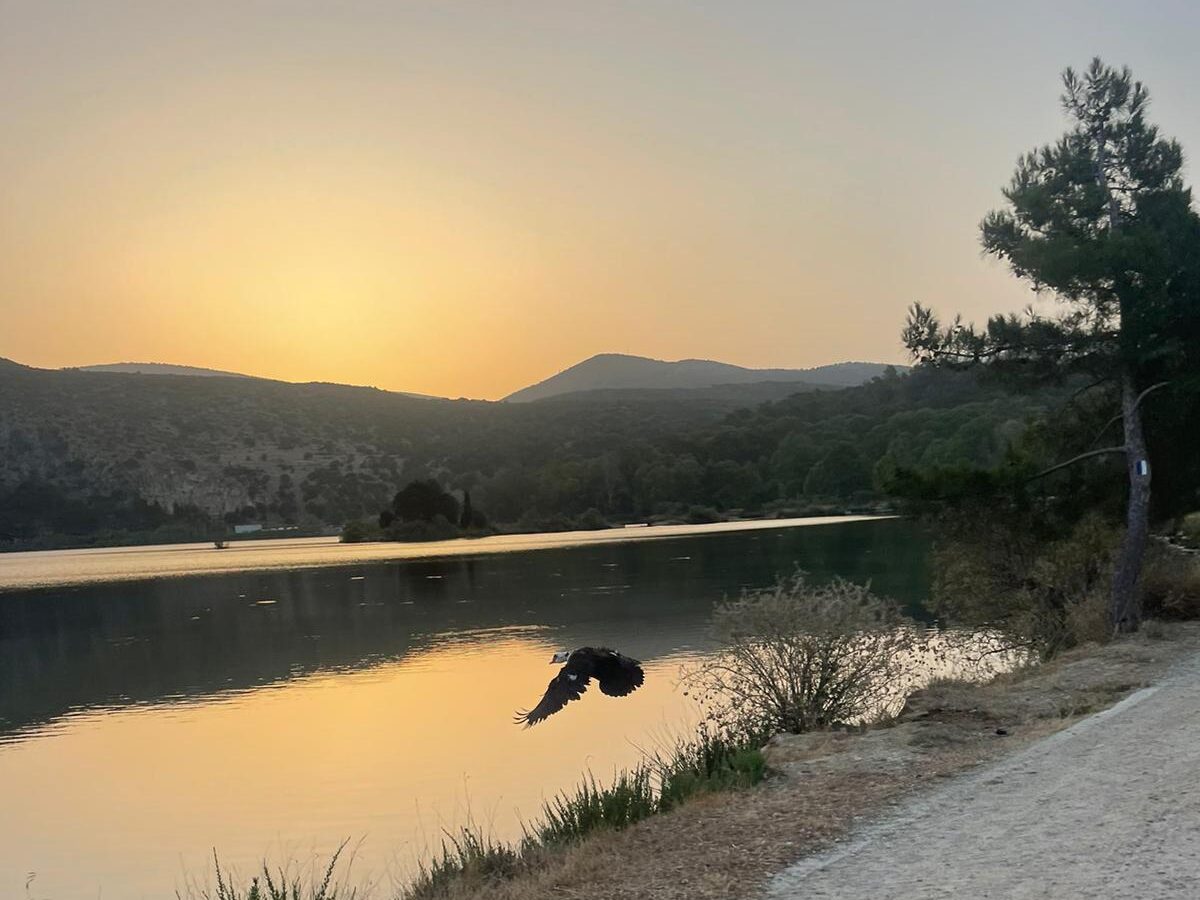
We have been surveying the sand dunes on Megali Ammos Beach to measure sand movement and their unique ecosystems. We have mapped this on QGIS, identified threats, and mapped coverage.
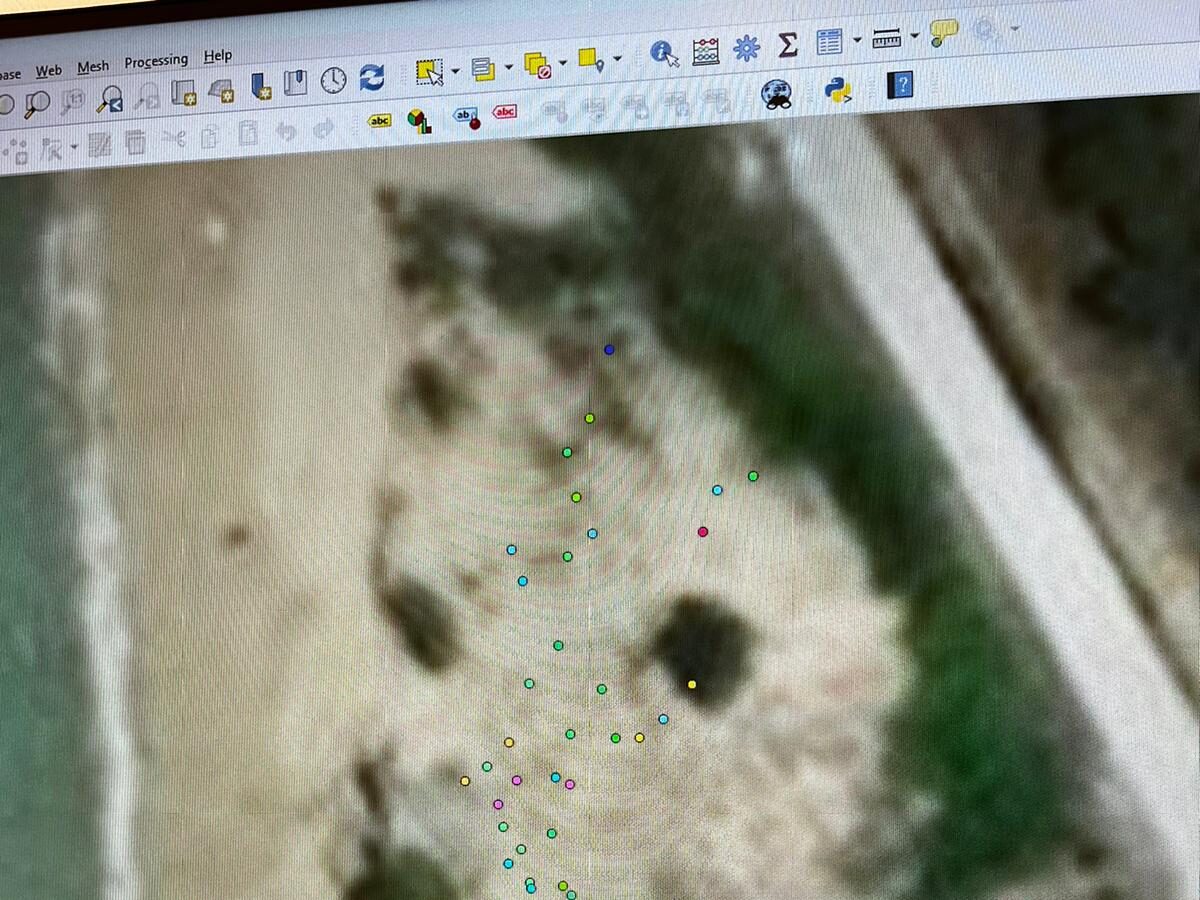
Svoronata has also adapted our beach cleans, using methods created by NOAA to understand, compare and identify debris across our beaches. Our volunteers’ efforts in Mines have uncovered the strangest debris, such as a humungous rope!
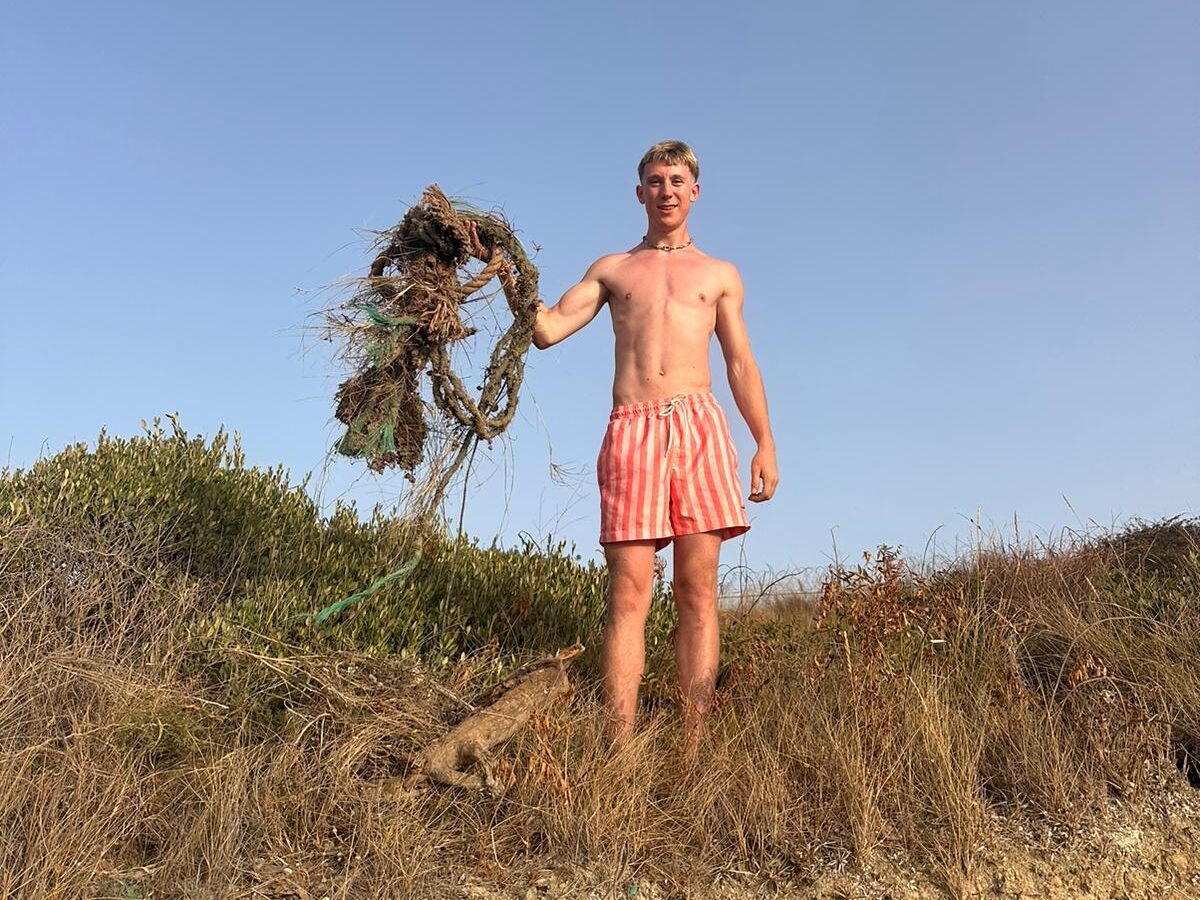
Aside from our shifts, we have had some brutal competition during our Svoronata Uno Olympics, to which our victors have been treated to the amazing prizes of delicious ice cream/bakery treats and reenactments of the great Greek Classic, Mamma Mia.


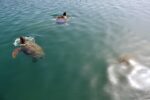
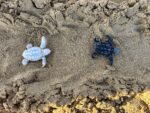
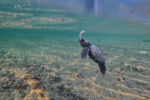
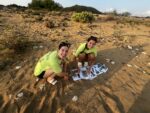
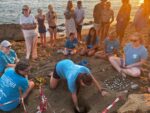
Thank you for all the fabulous work you all do protecting the beautiful wildlife of Kefalonia .